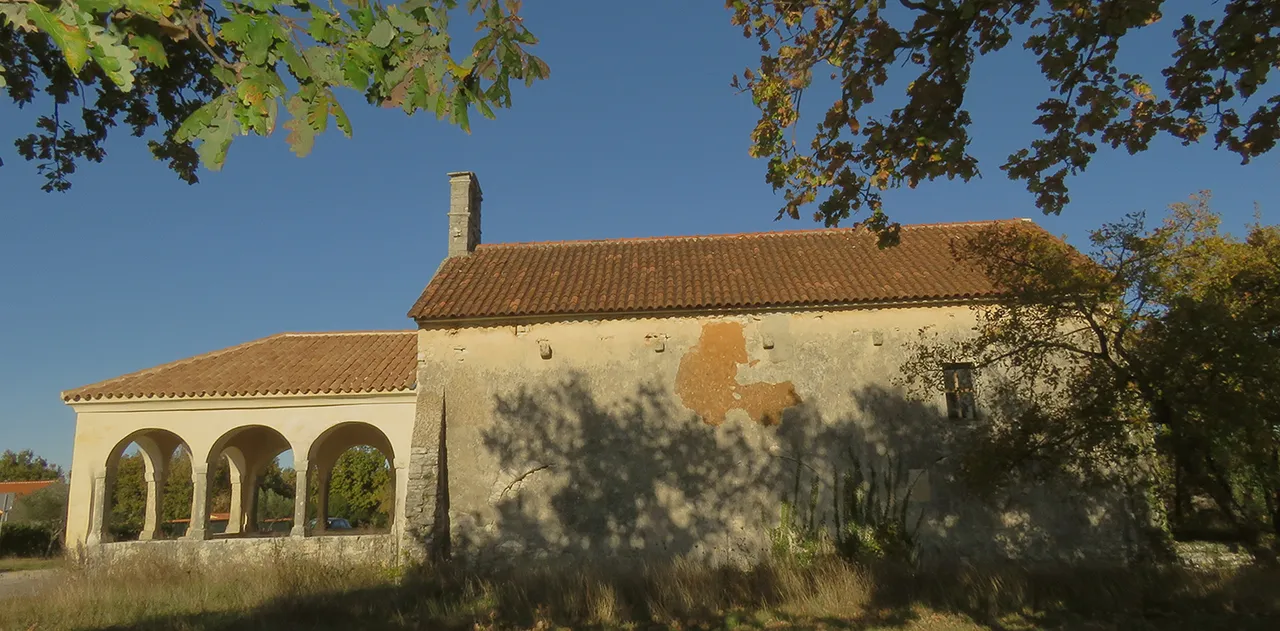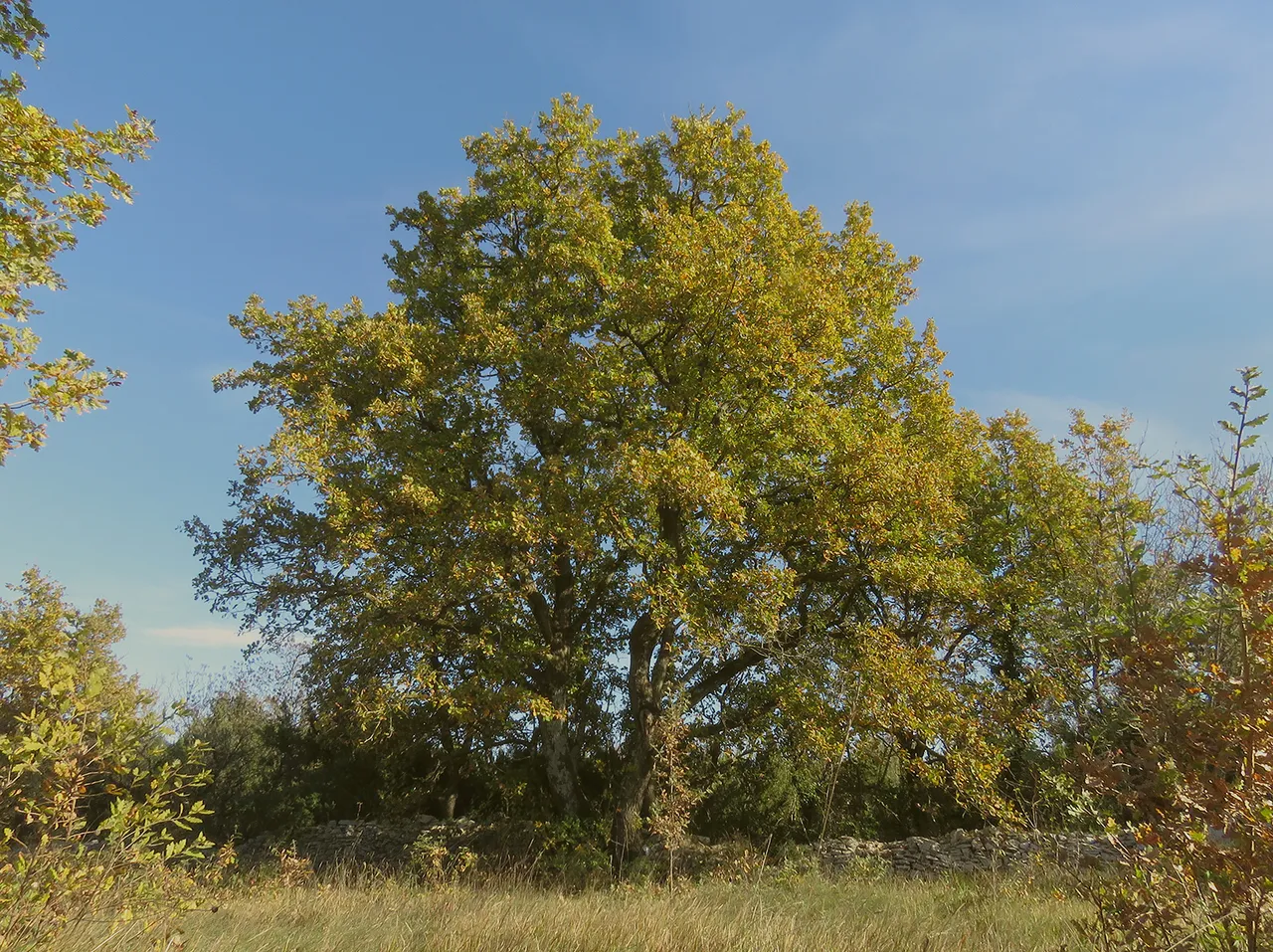A year ago, on the 1st of December 2021, I had to do something in the city. Can't remember what it was, but it almost certainly must have been something because I rarely go to the city just to take a walk and stuff like that.
Anyway. I spent some time, probably an hour or so there, and I took a bunch of photographs along the way. When this one was taken, an Intercity bus was passing between me and the elementary school Shiana. The bus terminal is just across the street from the school. I mean, on my side of the street. Shiana is the name of that neighborhood, and the city in question is Pula.

Here you can take a better look at the school. The bus has passed through the scene and disappeared behind the corner so the building's front facade is almost entirely visible. The school, much smaller than now, was opened in 1898, it had a much longer name " School of the Society of St. Cyril and Methodius" and it was the first Croatian school in the city with a couple of Italian ones. The building and the school inside it grew bigger over time, but I can't tell you when exactly and in what steps the thing has become larger.

Although today's post is mostly about architecture and history, the light of the late afternoon back then in last year's December looked great on the foliage, so I included the chestnut trees as well.
Autumn was in full swing, but without the deciduous trees, it wouldn't have looked like autumn.

The gray, Kafkian figure shown in this photograph ...
... is just one of the many similar ones drawn on the front facade of a large storage building behind the bus terminal.
If I remember well, this artwork that gives a lot of charm to the otherwise dull building appeared at some point in the early nineties. The following photograph was also taken a year ago ...
... but then last night, while preparing the post, I decided to play a bit with the artwork. So I darkened the image in Photoshop, made a duplicate, cut out the man in gray on the copied picture, moved him to the original & applied the invert effect on him. I also took away the colors before saving the modified photograph.
Here you can take one last look at the people stuck on the facade ...

... because is time to leave the city and continue northwards.
Before entering the car, I stopped to photograph the old door on the building across the street.
A moment later a girl on the bicycle and the city bus passed me by.
About ten or twelve kilometers north of Pula, I left the car by the side of the road, took a walk across the fields, and stopped by a small, rounded piece of rural architecture that looked a bit like an igloo made of stone. This type of building is called Kazun and it has a long history. I mean, I don't know how old is the Kazun shown in the above photograph, if I had to guess I'll say that was built at some point between the thirties and the sixties of the past century, but these little stone sheds had been built and rebuilt through history using the stones that have been removed from the fields to make them agriculture - friendly.

Here you can take a look at the Kazun's interior. In the neolithic, this type of building was used as a dwelling. It has survived in its original form but its purpose has changed into a tool shed or a small shelter for the people that work the fields. When a sudden storm arrives, is nice to have a Kazun at hand.

In this photograph, you can take a look at the small dome made of flat stones.
The oak trees near the drystone wall built who knows when around the field were very photogenic, so I photographed one of them and put it in the post.
Here you can take one last look at the Kazun before continuing the journey.
Another ten kilometers further, always northwards, I stopped to photograph this old church.
I walked across the relatively large porch ...

... photographed the plastic rose in one of the windows ...
... and then took a look through the rusted bars. The interior looked frozen in time. Dusty like in an abandoned church, but with benches and the altar still in good shape. Maybe is used only once a year, for some specific procession, like some other small, roadside churches in the area.

Quite a few layers of history are still present in this sacral building. I don't think the altar is very old ...

... haven't found any information about it, but I'll say the 19th century.

The building or at least some elements of the building, however, is much older.

The first church in this place was built in the 6th century. It was a basilica with three naves and three semicircular apses. The church inventory back then was made of stone. Some interesting pieces were found and are now preserved in some safer place, I guess. Where exactly? Can't tell you. Haven't found that information on the Internet.

The current church occupies the central space of the older church. The side walls are actually bricked-up arcades of the former three-nave building.

The cool thing is that the old layout of the church of St. Quirinus is still visible.

The church as we can see it today dates back to the 16th century. The two lateral naves of the St. Quirinus were demolished at some point in that century.

Can't tell you what these words engraved in one of the columns of the porch mean. If someone on Hive knows, I'll gladly read the translation.
And that's it. With one last look from the porch, is time to leave the church and end the post.
AS ALWAYS HERE ON HIVE, THE PHOTOGRAPHS ARE MY WORK.















